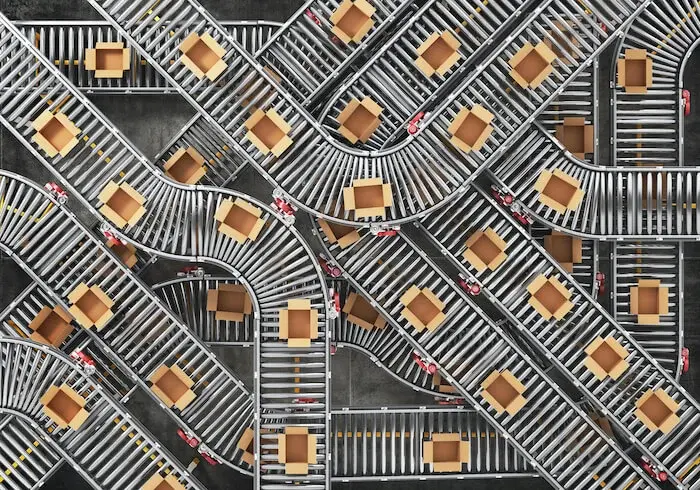& Construction

Integrated BIM tools, including Revit, AutoCAD, and Civil 3D
& Manufacturing

Professional CAD/CAM tools built on Inventor and AutoCAD
Prior to the coronavirus pandemic, the global supply chain had developed over decades into a relatively reliable system where companies depended on low-cost transportation and single, specialized suppliers scattered in far-flung locations across the map. However, that system had already shown increasing signs of vulnerability from an uptick in natural disasters, changing labor costs, advances in automation, and a rising tide of nationalism and trade protectionism.
With the massive COVID-19 disruption, supply-chain vulnerabilities are now impossible to ignore. Across the board, firms are looking to make manufacturing and supply networks more resilient and flexible, even though that will come with upfront investment and ongoing costs. Fortunately, this crisis has already triggered an unprecedented medical mobilization, and if supply-chain strategies evolve with a similar vigor, industry can rebound stronger and more capable to navigate unexpected shocks to the system.
This collection of analysis shows what industry leaders think needs to happen to make supply chains more resilient during and after the pandemic.
As COVID-19’s disruption to business continues to subside and eventually dissipates, the continuing threat to supply-chain stability will be the wave of trade protectionism that began well before the pandemic, according to Global Integrated Logistics CEO Chris Price. Global Trade Alert has tracked a sharp rise in nations’ measures that create obstacles to trade versus measures that liberalize trade since 2016. That trend has only continued with the 2020 COVID-19 crisis. To make more resilient supply chains, businesses should diversify their sources and suppliers, including softening any reliance on China, Price says. However, that diversification can carry a heavy cost, especially in uncertain economic times. A potentially more cost-effective way to build resiliency would be to speed up the adoption of digital technology, including big data and predictive modeling. Such a step creates efficiencies and flexibility for any type of disruption, especially those outside of one’s control, such as disease and trade protectionism. Read the article.
Whereas the efficiency of lean supply chains has been the trend for decades, the COVID-19 pandemic and a general momentum toward geopolitical nationalism will require a rebalancing between efficient and resilient supply chains that will not be easy, according to research and analysis firm Gartner. Its list of six steps toward making more resilient supply chains will require significant investment, but that should now be considered the cost of doing business, Gartner says, and ignoring resilient supply chains will likely cost more in the end anyway. Gartner’s road to supply-chain resiliency includes setting up inventory buffers, diversifying manufacturing networks with suppliers in multiple countries, multisourcing components, and nearshoring partners. Harmonization—standardizing components, platforms, and machinery across products—can also help. Finally, Gartner encourages strengthening relationships and establishing partnerships with material suppliers, service partners, contract manufacturers, and third-party logistics providers. Read the article.
The Boston Consulting Group (BCG) echoes many of the previous sentiments about the converging factors that have led to a critical need to make resilient supply chains: rising automation and protectionism, natural disasters, changing labor costs, and the coronavirus pandemic. However, BCG takes a more methodical approach to recommending that supply-chain leaders design a flexible, restructured supply chain according to the industrial sector, location, and type of sourcing/manufacturing networks that apply to an organization’s supply chain. BCG visually charts out the goods sectors most susceptible to change and the key resiliency factors in three stages of the supply chain: the sourcing, making, and delivery stages. Then BCG recommends a six-step process for redesigning a supply chain according to today’s risk factors that includes identifying, evaluating, testing, and implementing an optimized supply-chain design. Read the article.
A recent commentary in Supply Chain Quarterly posits that if companies subject their supply chains to “stress tests” that identify strengths and vulnerabilities in the face of unexpected disruptions, they could become more resilient in the way that the banking industry did after implementing stress tests in the wake of the Great Recession of 2007–2009. These supply-chain tests would examine a bundle of factors, including planning, suppliers, geography, product portfolio, and working capital. Companies using advanced tech such as artificial-intelligence-assisted demand-sensing and analytical tools could reduce or eliminate certain supply-chain disruptions. They should also increase their visibility of supply-chain partners and prequalify alternative supplier and contract manufacturers.
Borders introduce risks, so having a percentage of sales in the same country as manufacture is optimal, according to the authors. Designing products with fewer parts can simplify supply chains and manufacturing. That includes the potential for relying more on software within products so that features can be turned on or off virtually. Companies can also leverage their working capital by purchasing raw materials or common components in bulk and becoming investment partners with their key suppliers. Read the article.
In a 25-minute podcast from Harvard Business Review, Harvard Business School professor Willy Shih talks about his top recommendations for strengthening supply chains. His first step—mapping the supply chain—sounds simple but can get hairy quickly when certain complex products rely on 50 to 100 suppliers. Besides stockpiling inventory, which the tradition of lean supply chains has resisted, Shih suggests bringing sources and suppliers closer to home and improving processes. Often, adopting process improvement introduces efficiencies that can offset some of the increased costs that localization tends to introduce. He says companies that use the pandemic crisis to “unfreeze” their organization and adopt new ways of doing things are more likely to survive and thrive—whereas those that don’t, hoping things will go back to the way they were, are already experiencing problems. Businesses that have already unfrozen their processes during the pandemic, he says, will be in a better position to stay agile and adaptive in a post-pandemic environment. Listen to the podcast.
While most of these sources look at supply-chain resilience in the aftermath of COVID-19’s worst effects, Gopal Iyer of 4C Associates advises on preparing the supply chain for another widespread lockdown. Some of the advice is similar either way, but he begins with the simple directive that businesses should know their supply chain intimately. Most companies don’t even know their Tier 2 and Tier 3 suppliers, according to CIPS, but one should map out the cash flows, processes, and other information of the entire supply chain. Next, that information should be digitized so businesses can act as quickly as possible in response to disruptions. When building the links of a supply chain, costs will remain important, but they should not be the only consideration. Continuity, complexity, resilience, and sustainability factors should impact supply-chain decisions, as well. With increased volatility, businesses may have to revisit continuity planning more often than the customary five-year interval. Lastly, Iyer recommends that an organization break down any functional silos so it can operate as a single system. Read the article.
Markkus Rovito joined Autodesk as a contractor six years ago and joined the team full-time as a content marketing specialist focusing on SEO and owned media. After graduating from Ohio University with a journalism degree, Rovito wrote about music technology, computers, consumer electronics, and electric vehicles. Since his time with Autodesk, he’s developed a great appreciation for exciting emerging technologies that are changing the world of design, manufacturing, architecture, and construction.
PD&M
D&M
AECO







